Geology Test 2 Coulson Clemson – Flashcards
Unlock all answers in this set
Unlock answersquestion
the most common type at earth's surface what do we use sedimentary rocks for --1.) construction sites and building materials --2.) almost all fossils are found in sedimentary rocks --3.) fossil fuels --4.) soils --5.) landslides
answer
Sedimentary Processes
question
the original rock from which something else was found does not matter what type of rock
answer
Parent rock
question
breakdown of rock into particles
answer
weathering
question
mechanically or physically break the rock down --ex: roll it down a hill to make it break apart
answer
physical weathering
question
rocks easily break apart
answer
natural zones of weakness exist in some rocks
question
plant roots can force their way through solid rock splitting the rock apart --ex: root cracks in sidewalks
answer
biological activity
question
-when water freezes it expands so the ice presses against the sides of the crack making it wider -each time water gets in the crack and freezes the crack widens until it finally splits --ex: pot holes
answer
Frost wedging
question
-more common in many environments -diff minerals will react at diff rates -last minerals to form in Bowes reaction series are the more stable at earths surface -first minerals to form in Bowes reaction series are the least stable at earths surface --dissolve it in acid ---feldspar +H2O + H2CO3 => kaolinite + dissolved ions
answer
chemical weathering
question
soft, thoroughly decomposed and porous rock, often rich in clay. Generic rock that has all minerals weathered away -common in SC in the layers of the earth
answer
Saprolite formation
question
when oxygen combines with other elements in rocks to form new types of rock. These new substances are usually much softer, and thus easier for other forces to break apart
answer
oxidation
question
moving sediment from one place to another 4 things in nature commonly cause erosion -1. water -2. wind -3. gravity (landslides) -4. ice (glaciers)
answer
Erosion
question
any natural depression that can hold sediment
answer
basin
question
the amount of space available in a basin to hold sediment
answer
accommodation space
question
as sediment is deported its weight may cause the basin to sink
answer
subsidence
question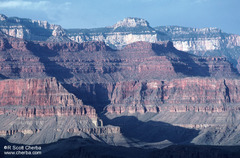
layer of sedimentary rock or soil with internally consistent characteristics that distinguish it from other layers

answer
strata aka beds
question
process of becoming solid rock
answer
lithification
question
-compaction -cementation
answer
lithification steps
question
pack the layers of sediment together. can do this by adding layers to the basin in order to create more pressure on the particles to get closer together
answer
compaction
question
stuck together with natural cements -water is squeezed out dissolved materials in the water get left behind
answer
cementation
question
*classified by grain size -produced by physical weathering
answer
Clastic (detrital) sediments
question
how uniform are the grains in a rock. -well sorted --grains are very similar in size -moderately sorted --grain sizes mixed together -poorly sorted --lots of different sizes mixed together tells how much erosion occurred -* better sorting=eroded farther
answer
Sorting (clastic trait 1)
question
measures how spherical the grains are -well rounded --very spherical -moderately rounded --somewhat spherical -poorly rounded --grains are jagged, angular, blocky *longer transport=more round
answer
Roundness (clastic trait 2)
question
moderately rounded gravels (clastic)
answer
Conglomerate
question
poorly rounded gravels (clastic)
answer
breccia
question
sand (clastic)
answer
sandstones
question
silt (clastic)
answer
siltstone
question
layered clay (clastic)

answer
shale
question
unlayered clay (clastic)
answer
mudstone
question
form via chem reaction. thick layers. -ex: bonneville salt flats in Utah *sorting and rounding don't apply to chem seds -usually comprised of 1 major mineral type
answer
chemical sediments
question
rock salt (chem sed)
answer
halite
question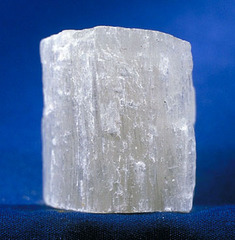
rock gypsum (chem sed)

answer
gypsum
question
chert (chem sed)

answer
quartz
question
composed of plant and animal remains classified by the types of materials present
answer
Biogenic
question
tiny carbonate shells poorly cemented together (bio seds)
answer
chalk
question
carbonate particles (bio seds)
answer
limestone
question
compressed plant remains (bio seds)
answer
coal
question
1. lack of consolidation 2. slope steepness 3. moisture level 4. amt of vegetation
answer
What causes land slides
question
cohesive forces bind sediment -ex: plant roots consolidate seds -- this is why there is small dirt when pull a plant out the ground
answer
Lack of consolidation (landslides)
question
the max angle at which a slope is stable -often marked at 35* but it can vary so don't assume
answer
angle repose
question
too little water -dry grains roll downhill --ex: building a sandcastle with dry sand too much water -seds turn to mud and flow downhill easily moderate amount of moisture -adds cohesive force that holds grains in place
answer
moisture level (landslides)
question
usually stabilizes but it can destabilize -lots of veg can soak up lots of water --water dries up seds and adds weight to the slope --roots also help water flow deeper into the slope and saturate it you want a moderate amt of veg
answer
amount of vegetation (landslides)
question
based on type or material moving and the type of movement
answer
Mass wasting
question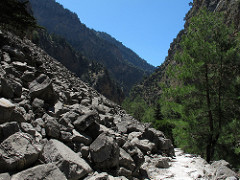
type of material: solid rock type of movement: fell straight down

answer
Rockfall
question
material: rock movement: sliding downhill -slides move slower due to friction but they cover long distances ex: mudslides, snow, avalanches
answer
rockslide
question
gradual downhill movement of sediments due to gravity
answer
creep
question
-unstable slopes do not occur automatically -earthquakes -over saturation -anthropogenic
answer
what causes masting
question
grading slopes to early -landscaping past the angle of repose can destabilize removing vegetive cover -clear-cutting exposes the soil and the roots no longer help hold seds in place
answer
anthropogenic
question
1. building codes 2. drainage control 3. decrease slope grades 4. retains walls 5. rock belts
answer
prevention
question
knew nearby slopes are unstable but they prolonger it so long that it cost 200 million dollars in damage
answer
Case Study: Thistle, Utah
question
new study says hot spots activity in some areas slower than previously thought
answer
Geology in the news (Lecture 6)
question
rate of increasing temperature while increasing depth in the Earth's interior -Avg: 30° C/km -typical range 20-60° C/km -metamorphism via Heat
answer
Geothermal Gradient
question
increasing the temperature and changing rock, low pressure -over a short time scale
answer
1. Contact metamorphism
question
1 bar = atmospheric press at surface
answer
pascals and bars
question
~300 bar / km depth increase pressure and low temperature
answer
Pressure gradient
question
Squeezing an object evenly from all directions -ex: squeezing play dough with your hand because the same
answer
Confining Pressure
question
Most pressure coming from one direction (Usually top and bottom) -ex: put play dough btw hands to create a flat pressure
answer
Directed Pressure (AKA Differential)
question
metamorphism affecting rocks over an extensive area as a result of the large-scale action of pressure -happens at a subduction zone
answer
2. Regional Metamorphism
question
Can't pass each other easily grinding against each other -metamorphism can happen along fault by pressure change on a small scale
answer
3. Fault Metamorphism
question
rock interacting with hot ground water -dissolving material some grow in place
answer
4. Metasomatism
question
Economically important; high concentration of something valuable
answer
Ore deposits
question
hot seawater that circulates through newly formed igneous rock, flushes out some old materials, brings in new, alters mineralogy and creates a new rock
answer
Seafloor Metamorphism
question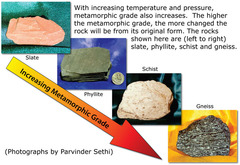
how much did they change based on temp and pressure -trying to heat something up

answer
metamorphic grade
question
Relativity narrow range of temperature, helps identify the temperature it was when changed
answer
Index Minerals
question
Group of index minerals
answer
metamorphic Facies
question
rock deeper and exposing to higher temperature pressure and INCREASING
answer
Prograde
question
Pressure and temperature DECREASING, heading to the surface (think things back in time (retro) are trying to become hip again)
answer
Retrograde
question
Some minerals can't be formed in certain temperature and the changes in minerals show this
answer
Changes w/in minerals can record P-T changes
question
Layers of sheets present in the rock because of pressure (Directed pressure) ex: slate, schist, gneiss
answer
Foliated Metamorphic Rocks
question
No layers, confining pressure, o Hornfels: o Quartzite: o Marble:
answer
Non-Foliated Metamorphic Rocks
question
Very fine grains
answer
Slate
question
Can see more of the grains/crystals: Appearance and mineralogy can be very different and hard to identify sometimes
answer
Schist
question
Color coded layers
answer
Gneiss
question
high temp low pressure
answer
hornfels
question
reacts with acid
answer
marble
question
35,000 evacuating bali as mount Laguna shows warning signs of an upcoming eruption
answer
Geology in the News (Lecture 6 PT 2)
question
Pulling in opposite directions, material is experiencing tension, think tug of war -divergent plate boundary
answer
1. Tensional
question
Squeezing in on both sides, exact opposite of Tensional, flattening -convergent boundaries
answer
2. Compressional
question
Sliding past each other -transform boundaries
answer
3. Shearing
question
no big change when force is applied but breaks
answer
brittle
question
when rocks bend or flow (like clay)
answer
ductile (plastic)
question
rock type temperature and pressure speed of deformation -how faster force move brittle response
answer
responses to stress is based on
question
Rock is responding in a ductile fashion to a compressional force, Can happen on different scales
answer
Folds
question
where rock are still realitivly straight
answer
limb
question
point where rock bends at
answer
Hinge
question
Rainbow shaped
answer
Antiform
question
Smile shaped
answer
Synform
question
Turned on its side
answer
Overturned (Antiform, Syniform):
question
Oldest layer is inner part

answer
Anticline
question
Oldest layer is outer part
answer
Syncline
question
Pressure left and right and compresses it, looks normal from most sides

answer
Horizontal
question
As you fold the layers they get tilted, see different and distinct patterns most common
answer
Plunging
question
Crack in the rock in response to tectonic forces -occurs in sets most common
answer
joints
question
Joint with motion on either side
answer
Faults
question
vertical fault cross section
answer
dip slip fault
question
the block positioned under the fault -narrow at top and wide at bottom
answer
Foot wall
question
the block positioned over the fault -wide at top and narrows
answer
Hanging wall
question
the block above the fault moves down relative to the block below the fault. This fault motion is caused by tensional forces and results in extension. (foot wall narrow top and wide bottom and hanging wall wide at top and narrows)
answer
Normal (dip slip) fault
question
the block above the fault moves up relative to the block below the fault. This fault motion is caused by compressional forces and results in shortening
answer
Reverse (dip slip) fault
question
Really flat, angle maybe 5 degrees • Around subduction zones -hanging up foot down

answer
Thrust fault
question
horizontal movement -no footwall -look at map view and not cross section
answer
strike slip faults
question
Strike-slip fault looks like its moving to the left
answer
Left-Lateral
question
Strike-slip fault Looks like moving right
answer
Right-Lateral
question
update in bail evacuation many people (75,000)
answer
Geology in the news (lecture 7)
question
time 1 -stressfriction --cycle starts over again
answer
what causes earthquakes
question
rocks trying to give a little bit to get pressure off (happens during time 2 of earthquake)
answer
elastic deformation
question
Release of energy that built up as rocks try to move past one another along a fault (or plate margin)
answer
Earthquake
question
the spot on the fault where movement actually occurs
answer
Focus
question
The point on the surface directly above the focus
answer
Epicenter
question
smaller movements before the quake.
answer
Foreshocks
question
smaller movements after the quake.
answer
Aftershocks
question
-- These are compressional waves, so they do not cause vertical or lateral movements -- Fastest Seismic waves: 6 km/s in the crust = 20x > sound waves in air --Move through solids & liquids
answer
Primary (P) Waves
question
-- Cause vertical displacement -- Slower, move at ~ half the speed of P-waves -- Cannot move through fluid --Ex: cannot pass through the outer core of the earth b/c it's too ductile
answer
Secondary (S) Waves
question
-- Little slower than S-waves -- Restricted to near earth's surface -- Cause vertical and horizontal movement
answer
L (long, surface) Waves
question
Their speed is affected by the materials they pass through ; come in contact with
answer
Seismic waves are used to study earth's interior
question
-- S-waves cannot pass through the outer core, so only P-waves pass through the core --Only P-waves are observed on the side of the earth opposite the focus
answer
S wave shadow zone
question
device used to record seismic waves.
answer
Seismometer
question
the graph produced by the seismometer Used to determine exactly when each type of seismic wave reached the seismometer
answer
Seismograph (-gram)
question
-- measures the amount of property damage --Uses Roman numerals Ex: II = very minor, XII = major --Useful for insurance adjustors, construction issues, etc --Not used by scientists
answer
Mercalli Index
question
--Measures the amount of ground shaking as measured by the seismometer --Created in 1935 It's a logarithmic scale
answer
Richter Scale
question
-- Measures the area of slip on the fault line = energy released ---how much did rocks move at the focus -- This is the scale scientists use most often, not the Richter scale!
answer
Moment (aka Moment magnitude)
question
-- more accurate -- easier to calculate from seismographs -- can calculate from field measurements even when no seismograph data is available
answer
Advantages of Moment magnitude
question
1-Most quakes occur along plate boundaries 2- Quakes w/ deep foci often occur at subduction zones 3- Some quakes do occur far from the edges of the plates
answer
Distribution of earthquake focus
question
1- Land use Policies Ex: Do not build directly on fault lines (In 1972 California outlawed building on a fault) 2- Follow safe Building Codes Ex: use reinforced concrete in high-risk areas 3- Build on the right type of material Myth- Don't build on solid rock b/c the ground will open & swallow your house Fact- Solid rock is one of the safest things to build on
answer
Damage Control
question
when sand/silt sediment turns into mud and begins to sink
answer
liquefaction
question
New Zealand quake recently triggered 'slow slip' quake -this happened after the earthquake which is uncommon
answer
Geology in the News (Lecture 8)
question
put things in order of events (Fish came before T Rex) -Qualitative easier and cheaper -youngest to oldest
answer
Relative Dating
question
Remains of ancient plants and animals, any evidence of ancient life -sedimentary rocks
answer
Fossils
question
Area in geology in studying the strata- layers of the earth
answer
Stratigraphy
question
breaks/gaps in the stratigraphic record of time in the layers, non continuous (Very Common)
answer
Unconformities
question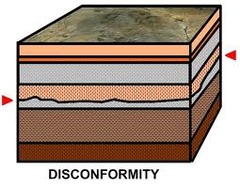
same general category of rock above and below -ex: ig rock above and below

answer
Disconformity (type of unconformities)
question
don't have same rock type above and below -ex: shale and basalt -sed then ig
answer
Nonconformity
question
looking at tilt and orientation of rock ex: layers bottom then tilt then erode
answer
Angular Unconformity
question
When you first form layers of rocks, they form horizontally
answer
Principle of Original Horizontality
question
When you have a bunch of layers stacked together, Youngest on top Oldest on bottom
answer
Principle of Superposition
question
When you have two features that intersect, thing that cuts through is the youngest
answer
Principle of Cross-Cutting
question
Fossils you find in rock layers will be in certain sequences: Oldest organisms in oldest rock, Youngest in youngest rock
answer
Principle of Faunal Succession
question
Link the areas together to see how they compare, Very powerful tool
answer
Correlation
question
Represents a very short and specific time span, needs to meet certain criteria
answer
Index Fossils
question
• Very Numerous: Large Population- Not many organisms fossilize so large population needed • Widespread: You want to go through lots of different areas and find these fossils- easier to correlate • Went extinct quickly: time span short • Easy to identify- Not sure about identification it could throw you completely off
answer
Criteria for Index Fossils
question
Correlate based on the type of rock layers
answer
Lithostratigraphy
question
-can be found in multiple places Great for coastal environments -oil and gas deposits
answer
Sequence Stratigraphy
question
o Chemical markers that lets you correlate areas
answer
Chemostratigraphy
question
Magnetic reversals where you can compare the sequences of the reversals and correlate them
answer
Magnetostratigraphy
question
4.5 Ga- 4.0 Ga (Disputed) • Planet Accretion, Theia Impact, Forming primitive atmosphere and ocean
answer
1st Eon: Hadean
question
4 Ga- 2.5 Ga • Start building more continental crusts -oldest signs of life
answer
2nd Eon: Archaen
question
2.5 Ga- 550 Ma • Oxygen starts to come into atmosphere
answer
3rd Eon: Proterozoic
question
550 Ma- Now Most life starts to form 3 Eras
answer
4th Eon: Phanerozoic
question
550 Ma- 200 Ma
answer
Paleozoic (Phanerozoic)
question
Big diversity of organisms being fossilized
answer
Cambrian Explosion (Phanerozoic)
question
200 Ma- 65 Ma -dinosaurs dominate
answer
Mesozoic (Phanerozoic)
question
65 Ma- Now o Age of mammals o After dinosaurs die out, they diversify and become bigger o Ice age
answer
Cenozoic (Phanerozoic)
question
"young" diamonds discovered -1.1 GA -very rare because diamonds have a specific temperature/pressure -indicates superhot volcanism at relatively young point in Earth history
answer
Geology in the new ( lecture 8 part 2)
question
Quantitative hard and expensive -putting numbers on everything
answer
Absolute Dating
question
thin layers of sediments that form in specific environments -only form in large bodies of water --light layers (warm part of year) --dark layers (cold part of year) -each pair that forms is a year
answer
Varves
question
counting tree rings to find age -samples overlap and find older ages -sometimes they don't always form rings so you need think about the type of tree
answer
Dendrochronology
question
atoms of same element but different number of neutrons in nucleus
answer
Isotope
question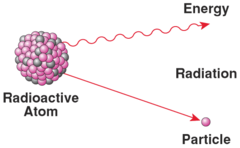
atoms emits radiation to become stable

answer
Radioactive decay
question
energy and particles
answer
radiation
question
unstable must decay
answer
parent
question
replaces parent -sometimes stable sometimes unstable and must decay
answer
daughter
question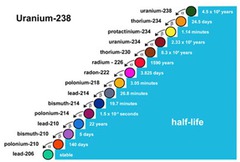
list of all the daughters until it becomes stable

answer
decay series (aka chains)
question
-amount of time it takes for 50% of parent atom to decay -every element has its own half life
answer
half life
question
1. radioactive isotopes must be present in your specimen 2. needs to be able to measure the parent and daughter in specimen 3. not enough left --every parent runs out it is around 5 half life 4. closed system
answer
requirements for time
question
whatever you are studying is closed off from its surrounding -like a closed taped box nothing going in or out
answer
Closed system
question
around 5,730 half life exception to the 5 half life rule
answer
Case Study: Carbon 14
question
amount your making= amount you use
answer
steady state
question
only things that are part of the food chain
answer
Dating with carbon 14
question
[ln(Nf/No)/-0.693]*half life
answer
how to calculate age
question
1. system remains closed systems after death 2. amount c 14 has always been the same -1st problem --c 14 production varies over time --solution ---variations are small and on short time scales -2nd problem --fossil fuels but carbon in the atmosphere that changed the relative amount of carbon isotopes in the atmosphere --solution ---this can be corrected
answer
assumptions for carbon 14



